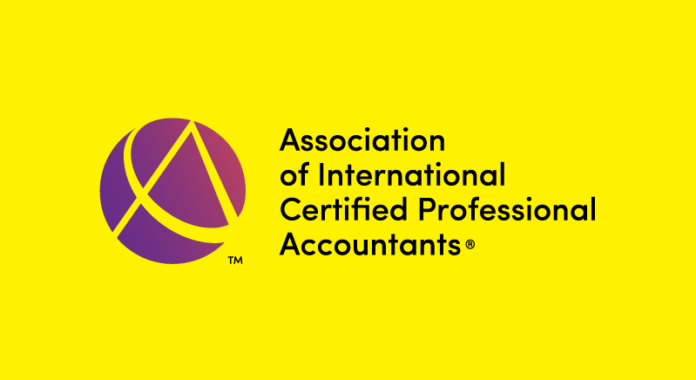November 2020
We take a look at the recently published CIMA case study pre-seens.
Welcome to knowledge city
November’s case study for Strategic level PQs is all about Knowledge City Technology Park. That’s KCTP to you (a senior manager in the finance function) and me. You report directly into the board advising on special projects and strategic matters.
Located close to a leading technology university, this science park offers buildings and offices to rent, with scope to extend buildings and adapt them to tenants’ needs. Privacy for companies is also key here.
Technology park owners generally look for sites on the outskirts of cities where land prices are cheaper, especially those that are near airports and other transport networks. Being close to a university is another key strategic consideration. You want access to leading researchers and have access to a ready supply of future employees, in the form of graduates.
Tenants can be anything from a start-up to a subsidiary of major corporations, we are told. They all like the idea of collaborating, so having a good mix of tenants is vital.
The 24-page case also talks about problems with electrical ‘spikes’ and the importance of investing in infrastructure. On top of protecting electricity supply, high-speed data is crucial, along with security and tailored office support.
As these are general out-of-town sites parking becomes important, as is a frequent bus service. KCTP is the country’s largest technology park. Floated in 1999 the university retains a 20% shareholding, with the rest traded on the stock exchange. The ties between the university and KCTP are tight, and it has had successful collaborations with other universities.
Security is flagged as an issue as are tenancy agreements, which at just 12-months long seem a little short! That said, most tenants only stay for two years.
All the board appointments seem relatively recent, and the university have a NED on the board (it’s the only link between the university and KCTP management).
The principal risks seem clear – health and safety, tenant turnover, servers, cyber security, and security in general.
There’s also a competitor just 15 miles away (Sypark).
Among the news stories is one about the development of computer simulations and virtual models that could threaten science parks. Another looks at the take-off of 3D printers.
Building bricks for MCS success
Who doesn’t love a plastic brick construction toy? Management Case Study November sitters need to forget their Lego and think Prybloxx. Denmark also becomes Varanda for the November (and February 2021) case.
Interestingly, we are told Prybloxx imitates the success of the leading brand’s sales, but it sells bricks by weight. Refreshing product ranges is another key to its success.
As finance manager in the head office you will be reporting into Alex McDonald, the senior finance manager.
The company operates around the world and it aims to pay a living wage for all its workers (page 13).
The case study also takes a look at Ckonstro, Prybloxx’s closest rival, which has baby bricks (for really small children), and engineering kits that enable the construction of complicated mechanical models. Something schools might be interested in?
One ‘news report’ (page 21) looks at issues around recycling and over-packaging. The other reports highlights the importance of online selling, the rise of engineering kits, and toys as collectables.
Check out Lego https://www.lego.com/en-gb/aboutus/legogroup/, Mega Bloks https://www.megabloks.com/en-us/, and see Cada Bricks’ range at https://www.yourwobb.com/collections/cada
The case study covers both the November and February 2021 exams.
Sleep tight with the OCS pre-seen
Operational case study studiers should sleep easier with the November pre-seen! The case study for the next two sittings homes in on AmaZZZing Beds, a company that sells mattresses and beds through a network of 120 stores and online.
On top of selling major brands it has its own brand, but doesn’t export. The country’s largest retailer by revenue, it is owned by a private equity investor.
After years of stagnation there has been a five-year growth in sales in this industry, as wellbeing and sleep quality takes centre stage.
The figures show that AmaZZZing Beds makes two-thirds of its money from mattresses. Some 30% of its revenue and 33% of gross profits comes from the mattresses and beds it makes.
Looking at the directors we have a CEO who has “an increasing interest in green and ethical issues”, and recycling. The production director is keen to expand the range of mattresses and beds the company makes, and a logistics director who is replacing the delivery fleet with hybrid vehicles, which is 35% complete.
Finally, there is the FD who has lots of expertise in IT and is responsible for the company’s IT systems.
Some of the things we took out of the case:
• Leaving store managers to decide which mattresses and beds are displayed in its smaller stores, seems ‘interesting’.
• Despite being the country’s largest retailer, it has no corporate customers.
• Beds are manufactured for inventory rather than for a particular customer order.
• Its springs are supplied by a single supplier close to the production facility. The relationship with this supplier is excellent and let’s hope they remain so! The memory foam also comes from a single supplier from abroad.
• Many people are digitally monitoring their sleep patterns (page 14) – are smart beds the future? Sleepsters, a rival, have launched one.
• The success of online retailer Robert Mattresses, with its vacuum-packed recycling box, might come up somewhere. Recyling of old mattresses is a major concern (page 17).
• There are eight well-known brands – too many? Robert Mattresses looks like a good candidate for a takeover.
• Check out Dreams https://www.dreams.co.uk/mattresses, Mattressonline https://www.mattressonline.co.uk/, and Simba
https://simbasleep.com/products/hybridduvet-with-stratos
• Looking at these sites we thought pillows, duvets, and kids beds!
The case study covers both the November and February 2021 exams.




